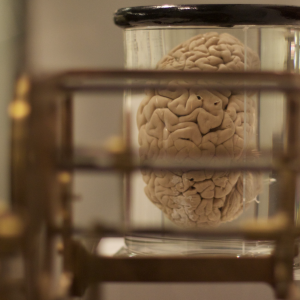Want to experience the greatest in board studying? Check out our interactive question bank podcast- the FIRST of its kind here: emrapidbombs.supercast.com
Author: Sean O’Sullivan, MD
Peer reviewed by: Blake Briggs, MD
Check out our podcast on this subject- “Episode 65: Guillain-Barre- How Dr. Strohl got forgotten”
Objectives: To understand this rare, acute polyneuropathy, and in particular the clinical indices of deterioration that indicate requirement for ventilatory support.
What is it? Guillain-Barré syndrome is the historical name for a heterogeneous series of acute immune mediated demyelinating polyneuropathies, which most frequently present as an acute illness following some infectious episode.
Progressive, ascending symmetrical muscle weakness beginning in the legs, absence or depressed deep tendon reflexes, and a paucity of sensory findings, are the hallmarks of the condition. Bladder dysfunction is unusual at presentation.
It is the most common cause of acute flaccid paralysis in children in the post-polio era.
Causes: An immune response to a preceding infection, due to cellular mimicry.
Campylobacter jejuni is the most commonly associated pathogen in the U.S., and might be associated with a worse prognosis. Influenza, CMV, HIV, Zika and EBV are also common culprit organisms. About 60% of cases of GBS will have a history of recent URI or GI infection.
Accelerate your learning with our EM Question Bank Podcast
- Rapid learning
- Interactive questions and answers
- new episodes every week
- Become a valuable supporter
Very rarely it can follow immunization as an idiosyncratic reaction.
Presentation: Symptoms typically begin with symmetrical muscle weakness in the legs and progress proximally, but arms, face and bulbar symptoms also occur. Differing presentations give rise to different syndromes. See below.
Severity varies from mild difficulty with ambulation to complete paralysis.
Patients present within a few days to 2 weeks after onset. 90% of cases are at their maximum within four weeks.
Paresthesias occur frequently in extremities, but sensory abnormalities on clinical exam are absent or mild.
Back pain secondary to nerve root inflammation can be a presenting feature.
Facial nerve palsies are variable, and can be bilateral. Oropharyngeal and oculomotor weakness occur in 15-50% of cases.
Dysautonomias are common, bradycardia, tachycardia, diarrhea/constipation, SIADH, hyponatremia, and a reversible cardiomyopathy.
Perhaps most importantly, progressive respiratory muscle weakness requiring ventilatory support is present in 10–30%.
What presenting features make a diagnosis of GBS UNLIKELY?
Back pain with bowel or bladder dysfunction at onset
Fever (If fever present at onset, think transverse myelitis; especially in HIV or post infectious patients)
Any significant loss of sensation
Marked asymmetry of muscle weakness
Diagnosis
Primarily clinical
Imaging rarely helpful, although MRI, if you can get one, may show enhancement of spinal nerve roots, thecal sac and potentially brain changes.
CSF protein is elevated, especially after one week.
CSF WBC is usually normal, although a mild pleocytosis, can occur.
This combination of elevated protein and normal CSF WBC is known as albuminocytologic dissociation.
Electrodiagnostic nerve conduction studies and EMG are useful both for diagnosis and prognosis, and for differentiating the main variants of GBS. These are not available in the emergency department.
The above criteria are diagnostic of classical GBS, the most common form in the U.S., earning the moniker Acute Inflammatory Demyelnating Polyradiculoneuropathy, AIDP.
But… up to 20 variations of GBS have been described (what?!). The most likely to be met on board exams is Miller Fisher Syndrome, (MFS) which typically displays muscle weakness and areflexia in the upper extremities, along with ophthalmoplegia and ataxia. This is an insanely rare condition and therefore limited reports on optimal management.
MANAGEMENT:
Let’s set the record straight- no therapy will reverse the disease process.
Potentially severe autonomic/hemodynamic dysfunction mandates ICU admission with close monitoring until the disease severity is established and/or nadir has been passed.
Patients may require vasopressor and inotropic support if there is severe dysautonomia.
Plasma Exchange or IVIG will speed recovery. There is no added value in using both. These will be performed in the ICU, not the ED.
Up to 30% will develop respiratory failure requiring ventilator support.
The Numbers:
Forced Vital Capacity < 20 mL/Kg
Negative Inspiratory Force, (NIF), < 30 cmH2O
Maximum Expiratory Pressure < 40 cmH2O.
These indicate impending respiratory failure and are indications for intubation.
Caution: succinylcholine is contraindicated during intubation. The reason is muscle denervation results in up-regulation of acetylcholine receptors at neuromuscular junctions. The membrane is therefore super sensitive to succinylcholine, leading to hyperkalemia and potentially life-threatening arrhythmias.
CLINICAL features that are concerning for respiratory failure:
Bulbar dysfunction, swallowing difficulties are ominous clinical signs of impending respiratory failure.
Inability lift head
Rapid onset of disease (i.e., < 7 days from onset to admission/nadir)
Inability to cough or stand
Vital capacity < 60% of predicted
Severe muscle weakness
Elevated LFT’s
PAIN CONTROL
Gabapentin and carbamazepine are primary agents as pain is neuropathic
Use opioids with care in the setting of autonomic dysfunction
Epidural morphine may be useful.
Prognosis is spotty. Only about 60% of patients regain full neurological function in one year. Yikes.
References
1. Hahn AF. Guillain-Barré syndrome. Lancet 1998; 352:635.
2. Rees JH, Soudain SE, Gregson NA, Hughes RA. Campylobacter jejuni infection and Guillain-Barré syndrome. N Engl J Med 1995; 333:1374.
3. Brannagan TH 3rd, Zhou Y. HIV-associated Guillain-Barré syndrome. J Neurol Sci 2003; 208:39.
4. Yuki N, Hartung HP. Guillain-Barré syndrome. N Engl J Med 2012; 366:2294
5. Sejvar JJ, Baughman AL, Wise M, Morgan OW. Population incidence of Guillain-Barré syndrome: a systematic review and meta-analysis. Neuroepidemiology 2011; 36:123.
6. Ropper AH. The Guillain-Barré syndrome. N Engl J Med 1992; 326:1130.
7. Fokke C, van den Berg B, Drenthen J, et al. Diagnosis of Guillain-Barré syndrome and validation of Brighton criteria. Brain 2014; 137:33.
8. Alshekhlee A, Hussain Z, Sultan B, Katirji B. Guillain-Barré syndrome: incidence and mortality rates in US hospitals. Neurology 2008; 70:1608.
9. Moulin DE, Hagen N, Feasby TE, et al. Pain in Guillain-Barré syndrome. Neurology 1997; 48:328.
10. Ruts L, Drenthen J, Jongen JL, et al. Pain in Guillain-Barre syndrome: a long-term follow-up study. Neurology 2010; 75:1439.
11. Flachenecker P. Autonomic dysfunction in Guillain-Barré syndrome and multiple sclerosis. J Neurol 2007; 254 Suppl 2:II96.
12. Ropper AH, Wijdicks EFM, Truax BT. Guillain-Barré syndrome, FA Davis, Philadelphia 1991. p.57.
13. FISHER M. An unusual variant of acute idiopathic polyneuritis (syndrome of ophthalmoplegia, ataxia and areflexia). N Engl J Med 1956; 255:57.
14. Lo YL. Clinical and immunological spectrum of the Miller Fisher syndrome. Muscle Nerve 2007; 36:615.
15. Nishimoto Y, Odaka M, Hirata K, Yuki N. Usefulness of anti-GQ1b IgG antibody testing in Fisher syndrome compared with cerebrospinal fluid examination. J Neuroimmunol 2004; 148:200.
16. Byun WM, Park WK, Park BH, et al. Guillain-Barré syndrome: MR imaging findings of the spine in eight patients. Radiology 1998; 208:137.
17. Hughes RA, Wijdicks EF, Benson E, et al. Supportive care for patients with Guillain-Barré syndrome. Arch Neurol 2005; 62:1194.
18. Zochodne DW. Autonomic involvement in Guillain-Barré syndrome: a review. Muscle Nerve 1994; 17:1145.
19. Lawn ND, Fletcher DD, Henderson RD, et al. Anticipating mechanical ventilation in Guillain-Barré syndrome. Arch Neurol 2001; 58:893.
20. Sharshar T, Chevret S, Bourdain F, et al. Early predictors of mechanical ventilation in Guillain-Barré syndrome. Crit Care Med 2003; 31:278.
21. Hund EF, Borel CO, Cornblath DR, et al. Intensive management and treatment of severe Guillain-Barré syndrome. Crit Care Med 1993; 21:433.
22. Hughes RA, Wijdicks EF, Barohn R, et al. Practice parameter: immunotherapy for Guillain-Barré syndrome: report of the Quality Standards Subcommittee of the American Academy of Neurology. Neurology 2003; 61:736.
23. Patwa HS, Chaudhry V, Katzberg H, et al. Evidence-based guideline: intravenous immunoglobulin in the treatment of neuromuscular disorders: report of the Therapeutics and Technology Assessment Subcommittee of the American Academy of Neurology. Neurology 2012; 78:1009.



